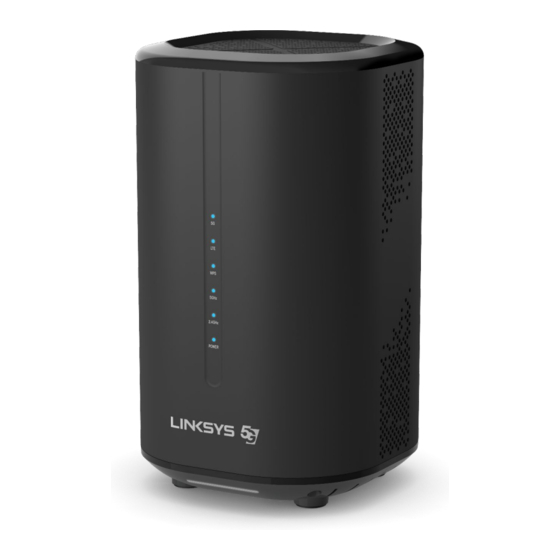
Table of Contents
Advertisement
Advertisement
Table of Contents

Summarization of Contents
Introduction
Product Overview
Provides a detailed overview of the router's physical components and ports.
Web Interface
Login to Web-GUI
Steps to access and log into the router's web-based graphical user interface.
WiFi
WiFi | Status
Displays the current status of the 2.4GHz and 5GHz WiFi networks, including SSID and broadcast status.
WiFi | Settings | WiFi 2.4GHz
Configuration options for the 2.4GHz WiFi network, including security and wireless settings.
WiFi | Settings | WiFi 5GHz
Configuration options for the 5GHz WiFi network, including security and wireless settings.
Network
Network | Status
Shows the current network status, including LAN and WAN information and lease status.
Network | WAN Setting (NAT Mode)
Configures WAN connection settings, including connection type and MTU.
Network | LAN Setting
Configures LAN IP address, subnet mask, and DHCP server settings for the network.
Network | Port Management
Manages port forwarding and port triggering for network traffic.
IPv6
IPv6 | Status
Displays IPv6 connection type and LAN address auto-configuration status.
IPv6 | Settings
Configures IPv6 internet connection type, DNS, and LAN address settings.
Firewall
Firewall | Basic
Enables or disables the firewall and configures DMZ IP address and ICMP settings.
Firewall | Access Restriction
Sets individual firewall rules based on date, time, device, and blocked reason.
Management
Management | Account
Allows changing the default username and password for superuser and end-user accounts.
Management | Device Setting
Configures management session timeout and device name for the router.
Management | Time Settings
Sets the device time, time zone, and configures NTP servers for time synchronization.
Management | Restore Default
Restores the router to its factory default settings and performs integrity checks.
Management | Software
Manages software upgrades, including local firmware upload and FOTA upgrades.
Monitoring
Monitoring | Status
Monitors system resources like CPU and memory utilization, and system information.
Monitoring | Iperf
Enables and configures Iperf for network performance testing.
Monitoring | Diagnostic Tools
Utilizes diagnostic tools like Ping for network troubleshooting and analysis.















Need help?
Do you have a question about the FGW3000-HK and is the answer not in the manual?
Questions and answers